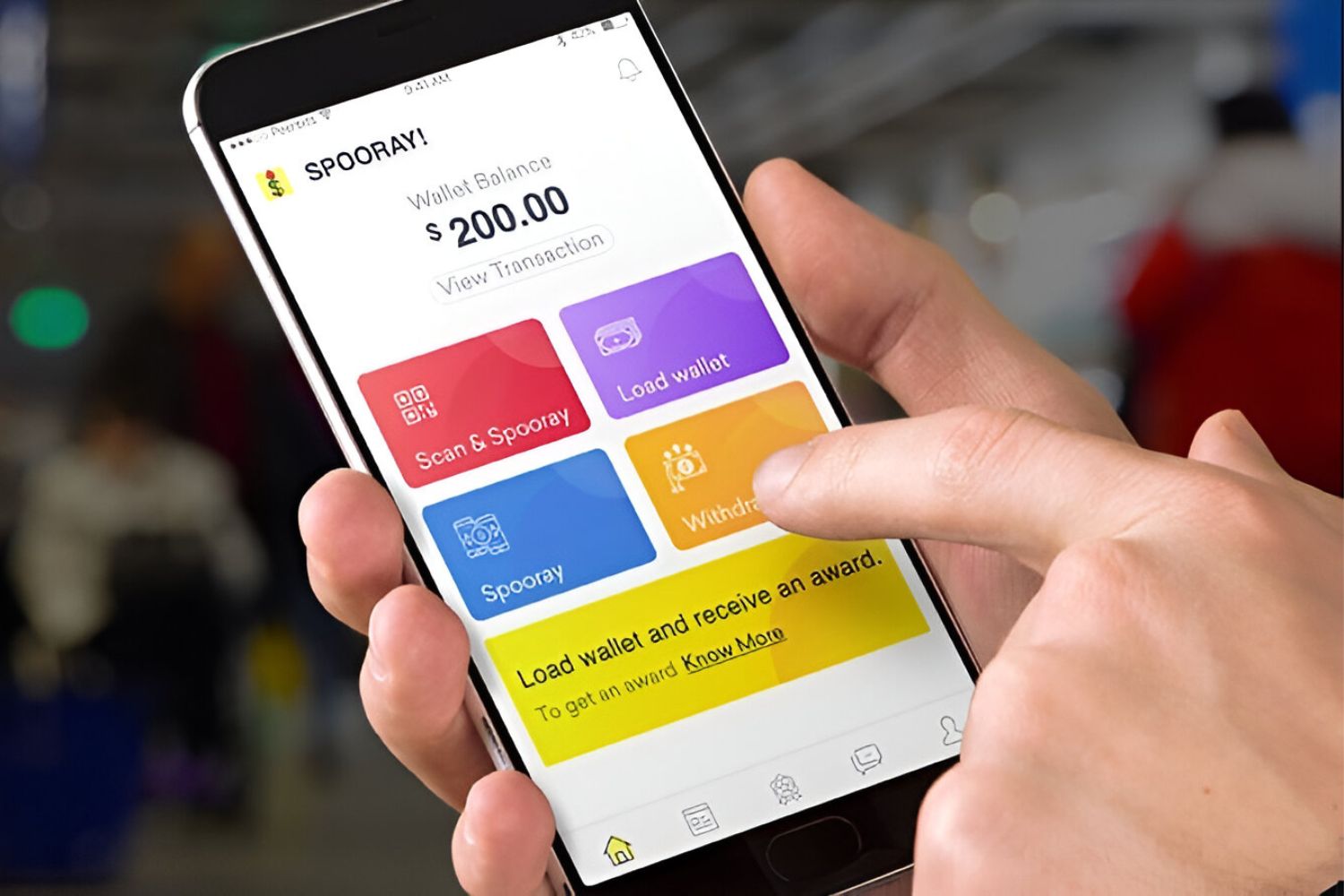Introduction
Welcome to the world of peer-to-peer (P2P) lending, where ordinary individuals have the opportunity to invest and make money by directly lending to borrowers. P2P lending has gained popularity in recent years as a viable alternative to traditional banking systems, offering attractive returns and diversification options.
P2P lending enables individuals to connect with borrowers through online platforms, cutting out the intermediaries such as banks. This allows for more efficient lending processes and potentially higher returns for investors. Whether you’re looking to earn passive income or diversify your investment portfolio, P2P lending can be an exciting and lucrative avenue to explore.
In this guide, we will walk you through the ins and outs of making money in the world of P2P lending. From understanding P2P lending platforms to selecting the right one for your needs, we’ll equip you with the knowledge and tools to succeed in this growing industry.
Investing in P2P loans requires careful consideration and a strategic approach. With so many platforms available, it’s crucial to research and select the one that aligns with your investment goals and risk tolerance. Once you’ve chosen the right platform, creating an account and setting up your profile is the next step.
We will also delve into various strategies and considerations for effectively investing in P2P loans. From diversification to loan selection and risk management, we’ll provide you with the insights you need to optimize your return on investment.
Managing your P2P investments is an ongoing process. We’ll discuss the importance of regularly monitoring your loans and how to implement withdrawal and reinvestment strategies to maximize your earnings. Additionally, we’ll touch upon risk management techniques to safeguard your investments in the volatile world of P2P lending.
Lastly, understanding the tax implications of your P2P investments is essential for financial planning. We’ll shed light on the tax considerations involved and provide guidance on how to navigate this aspect of P2P lending.
While P2P lending offers exciting opportunities, it’s vital to approach it with a well-informed mindset. By arming yourself with the knowledge and strategies outlined in this guide, you’ll be well-prepared to make money in the world of P2P lending and unlock the full potential of this emerging investment avenue.
What is P2P?
Peer-to-peer (P2P) lending, also known as crowdlending, is a method of lending and borrowing money directly between individuals without the involvement of traditional intermediaries like banks or financial institutions. P2P lending platforms act as facilitators, connecting borrowers seeking loans with individual lenders interested in investing their money for potential returns.
The concept of P2P lending has gained popularity over the years due to its potential for higher returns compared to traditional savings accounts and the ability to diversify investment portfolios. It offers an alternative to borrowers who may be declined loans by traditional lenders and provides investors with an opportunity to earn interest on their funds.
On P2P lending platforms, borrowers can access loans for various purposes, such as debt consolidation, home improvements, small business financing, or personal expenses. These borrowers create profiles on the platforms, providing information about their credit history, financial stability, and the purpose of the loan.
Individual lenders, also known as investors, can browse through the loan listings on the platform and choose to fund specific loans based on their risk appetite and investment objectives. Investors can typically lend small amounts of money to multiple borrowers, allowing for portfolio diversification.
Interest rates on P2P loans are determined through a process that considers the borrower’s creditworthiness and other factors. These rates can be competitive compared to traditional borrowing options, providing benefits for both borrowers and investors.
One of the key advantages of P2P lending is its simplicity and accessibility. The online platforms make it easy for individuals to participate in the lending process, from creating an account to selecting loans and managing investments. Additionally, P2P lending platforms often provide tools and data to help investors make informed decisions about loan investments.
It’s important to note that P2P lending should not be seen as risk-free. While platforms employ risk assessment techniques and verification processes, there is still a level of risk involved. Borrowers may default on their loans, affecting the returns of investors. Therefore, it is crucial for lenders to carefully assess the risk associated with each loan and diversify their investments across multiple borrowers and loan types.
P2P lending presents an opportunity for individuals to enter the world of finance and invest their money in a way that can provide attractive returns. However, it’s essential for both borrowers and lenders to understand the risks involved and make informed decisions based on their financial goals, risk tolerance, and the available options on the P2P lending platform.
Understanding P2P lending platforms
P2P lending platforms are online marketplaces that connect borrowers and lenders, allowing individuals to engage in direct lending transactions. These platforms have revolutionized the lending industry by offering a convenient and efficient way for individuals to access loans or invest their money.
These platforms act as intermediaries between borrowers and lenders, facilitating the lending process and providing a secure environment for transactions to take place. They play a crucial role in evaluating borrower applications, conducting credit checks, and setting interest rates based on borrower risk profiles.
When a borrower applies for a loan on a P2P lending platform, their application is thoroughly reviewed. The platform assesses their creditworthiness, income, and other relevant factors to determine the borrower’s eligibility. Based on this assessment, a loan listing is created, which includes details about the borrower’s profile, loan amount, loan purpose, and interest rate.
Lenders on the platform can then browse through the available loan listings and choose to invest in specific loans. They can assess the risk associated with each loan based on the borrower’s creditworthiness and other provided information. Investors have the flexibility to choose how much money they want to lend and at what interest rate.
Once a loan is fully funded by multiple lenders, the borrower receives the loan amount, and the repayment process begins. Borrowers make regular repayments, typically monthly, which include both the principal amount borrowed and the interest charged.
P2P lending platforms usually provide investors with tools and data to support their investment decisions. These tools may include loan performance statistics, borrower payment history, and risk analysis. This information helps lenders evaluate the potential return on investment and make informed decisions about loan investments.
Furthermore, many P2P lending platforms offer secondary marketplaces where investors can sell their loan investments to other investors before the end of the loan term. This provides investors with liquidity and the ability to exit their investments early.
It’s important to note that different P2P lending platforms may have varying eligibility criteria, loan types, and risk management strategies. Some platforms may specialize in specific loan categories, such as personal loans or small business loans, while others may offer a broader range of loan options.
Additionally, each platform may have its fee structure, which can affect the overall return on investment for lenders. It’s crucial for investors to thoroughly research and understand the platform’s terms and conditions, fee structure, and risk management practices before committing their funds.
Understanding how P2P lending platforms operate is crucial for both borrowers and lenders. By familiarizing yourself with the mechanics of these platforms, you can effectively navigate the lending process and make well-informed decisions that align with your financial goals.
Researching and selecting the right P2P platform
With the increasing popularity of P2P lending, there are numerous platforms available for borrowers and investors to choose from. However, not all platforms are created equal, and it’s crucial to research and select the right one that suits your needs and aligns with your investment goals. Here are some key factors to consider when researching and selecting a P2P platform:
1. Reputation and credibility: Look for platforms that have a solid reputation in the industry. Check for reviews, ratings, and feedback from other users to gauge the platform’s credibility. Additionally, consider the platform’s track record and how long it has been in operation. A well-established platform with a proven history of successful loan transactions may provide more confidence.
2. Loan types and risk assessment: Different platforms may specialize in specific loan types, such as personal loans, small business loans, or real estate loans. Consider the type of loans you are interested in and ensure the platform offers those options. Additionally, evaluate the platform’s risk assessment process. A robust risk assessment methodology can help mitigate the risk of default and protect lenders’ interests.
3. Interest rates and fees: Compare the interest rates and fees charged by different platforms. Keep in mind that higher interest rates may indicate higher levels of risk associated with the loans offered. Analyze the platform’s fee structure, including any origination fees or service charges imposed on borrowers and lenders. These costs can significantly impact your overall return on investment.
4. Transparency and disclosure: Look for platforms that provide transparent and comprehensive loan information. The platform should disclose details about the borrowers, loan terms, loan purpose, interest rates, and any associated fees. Transparency helps lenders make informed investment decisions and better understand the potential risks involved.
5. Platform features and usability: Evaluate the platform’s user interface and features. A user-friendly platform with intuitive navigation and clear instructions can make the lending process more convenient and efficient. Consider the availability of tools and resources provided by the platform, such as loan performance data, borrower analytics, and investment tracking tools. These features can significantly enhance your lending experience.
6. Regulatory compliance and investor protection: Ensure that the platform complies with relevant regulations and has appropriate licenses or certifications. This ensures that it operates within the legal framework and adheres to industry best practices. Investigate the platform’s investor protection mechanisms, such as loan buyback guarantees or contingency funds, which can provide an additional layer of security for lenders.
7. Customer support: Assess the platform’s customer support options and responsiveness. In case of any issues or queries, it is important to have access to prompt and helpful customer service. Look for platforms that offer multiple communication channels, such as live chat, email, or phone support.
It’s essential to thoroughly research and compare multiple P2P lending platforms before making a decision. Consider your investment goals, risk tolerance, and the platform’s suitability based on the factors mentioned above. Remember, diversification across multiple platforms can further mitigate risks and provide a more balanced investment portfolio.
Creating an account and setting up your profile
Once you have completed your research and selected a P2P lending platform that aligns with your goals, the next step is to create an account and set up your profile. This process is usually straightforward and involves a few essential steps:
1. Registration: Visit the platform’s website and click on the “Sign-Up” or “Create Account” button. You will be asked to provide basic information such as your name, email address, and sometimes your phone number. Create a strong password to secure your account. Some platforms may require additional details or verification steps to complete the registration process.
2. Profile creation: After registering, you will be prompted to complete your profile. This is an important step as it provides crucial information to potential borrowers or other investors. You may need to provide personal details such as your age, address, employment information, and income level. The platform may also ask about your investment preferences and risk tolerance.
3. Verification process: In order to maintain security and comply with regulatory requirements, some platforms may require you to go through a verification process. This process verifies your identity and may involve submitting documents such as a copy of your identification card, proof of address, or proof of income. The platform will guide you through the necessary steps for verification.
4. Linking your bank account: To facilitate deposits and withdrawals, you will need to link your bank account to your P2P lending platform account. This allows for seamless transactions and ensures that funds can be transferred securely between your bank and the platform. Follow the instructions provided by the platform to link your bank account.
5. Setting preferences: Most platforms allow you to customize your investment preferences based on factors such as loan term, loan purpose, and risk tolerance. Take the time to explore and set your preferences according to your investment goals. This will help the platform suggest suitable loan opportunities for your investment portfolio.
6. Funding your account: Before you can start investing, you will need to deposit funds into your platform account. This can typically be done through a bank transfer or other supported payment methods. Follow the instructions provided by the platform to deposit funds securely. Some platforms may have a minimum funding requirement for your account.
7. Review and consent: Before finalizing your account setup, carefully review all the information you have provided. Ensure that your profile accurately reflects your investment preferences, risk tolerance, and any additional details required by the platform. Take the time to read and understand the terms of service and consent to the platform’s policies and procedures.
By completing these steps, you will have successfully created an account and set up your profile on the P2P lending platform. Now you are ready to explore available loan opportunities and start investing in P2P loans. Remember to regularly update and monitor your profile to ensure it reflects your current financial situation and investment objectives.
Investing in P2P loans: Strategies and considerations
Investing in P2P loans can be a rewarding way to earn passive income and diversify your investment portfolio. However, it’s important to approach this form of investment with a well-defined strategy and careful consideration of various factors. Here are some strategies and considerations to help you make informed investment decisions in P2P loans:
1. Define your investment goals: Clearly define your investment goals and objectives. Are you looking for stable, consistent returns or willing to take on higher-risk loans for potentially higher rewards? Determine your desired level of income generation, growth, or risk tolerance to set appropriate investment goals.
2. Diversify your investments: Diversification is key to mitigating risk in P2P lending. Spread your investments across multiple loans and borrowers to reduce the impact of defaults or late repayments on your overall portfolio. Consider investing in loans with varying risk profiles, loan terms, and loan purposes to diversify your investment further.
3. Conduct thorough loan analysis: Before investing in a loan, carefully review the loan details provided by the platform. Consider factors such as the borrower’s creditworthiness, loan purpose, loan term, interest rate, and repayment history (if any). Evaluate each loan based on your risk appetite and investment goals.
4. Assess the platform’s risk management practices: Evaluate the platform’s risk management practices and the extent to which they protect lenders’ interests. Look for platforms with robust risk assessment methods, borrower verification processes, and investor protection mechanisms like loan buyback guarantees or contingency funds.
5. Monitor loan performance: Regularly monitor the performance of your loans to identify any concerning trends or potential issues. Stay informed about borrowers’ payment history and any changes in their financial situations. Platforms often provide loan performance data and analytics to help you track and analyze the loans in your portfolio.
6. Reinvest your earnings: Reinvesting your earnings can compound your returns over time. Consider reinvesting the principal and interest payments received from your loans into new loans. This helps accelerate your portfolio growth and potentially increases your overall earnings.
7. Stay updated with platform news and updates: Stay informed about any news, updates, or changes related to the P2P lending platform you are using. Platforms may introduce new loan products, change interest rates, or implement policy updates that can affect your investment strategy. Regularly review platform communications and announcements to stay in the loop.
8. Stay within your risk tolerance: P2P lending, like any investment, carries risks. It’s crucial to understand your risk tolerance and invest accordingly. Avoid allocating more funds than you are willing to lose and be prepared for the possibility of loan defaults or delayed repayments. High return opportunities often come with higher risks, so balance your investment choices accordingly.
By implementing these strategies and considerations, you can optimize your investment approach in P2P lending and increase the likelihood of achieving your investment goals. Remember, research and diligence are crucial in making informed investment decisions in this dynamic and evolving sector.
Managing your P2P investments: Monitoring and diversification
Managing your P2P investments effectively requires active monitoring and maintaining a well-diversified portfolio. By staying attentive to your investments and diversifying your loan holdings, you can enhance the performance and reduce the risks associated with P2P lending. Here are some key strategies for managing your P2P investments:
1. Regularly monitor loan performance: Stay updated on the performance of your loans by monitoring borrower payments and loan status. Check for any missed or late payments, defaults, or early repayments. Many P2P platforms provide tools and dashboards to help you track the repayment history and overall performance of your loans.
2. Reinvest principal and interest payments: Consider reinvesting the principal and interest payments you receive from your loans. This can help maximize your returns by compounding your earnings over time. By reinvesting, you can continuously deploy your funds into new loans and maintain a consistent cash flow.
3. Diversify your loan portfolio: Diversification is vital in P2P lending to mitigate the impact of any individual loan defaults. Spread your investments across multiple borrowers, loan types, and risk categories. This way, if one borrower defaults or faces difficulties, it will have a limited impact on your overall portfolio.
4. Evaluate loan opportunities: Continuously evaluate new loan opportunities presented by the P2P platform. Pay attention to the borrower’s creditworthiness, loan purpose, loan-to-value ratio, and any other relevant factors. Compare the potential returns and risks associated with different loans before deciding to invest.
5. Consider secondary market opportunities: Some platforms offer secondary markets where you can sell your loan investments to other investors before the loan term ends. This provides liquidity and flexibility by allowing you to exit or adjust your investments according to changing market conditions or personal circumstances.
6. Stay informed about platform updates: Keep yourself informed about any platform updates, announcements, or changes in policies. Stay alert to any changes in interest rates, fees, or loan products that might affect your investment strategy. Regularly review platform notifications, newsletters, or communication channels to stay up-to-date with platform-related information.
7. Stay within your risk tolerance: Investing in P2P loans carries inherent risks, such as borrower defaults or economic downturns. Assess your risk tolerance and invest accordingly. Be cautious about investing a significant portion of your portfolio in higher-risk loans or borrowers, especially if you have a lower risk tolerance.
8. Review and adapt your strategy: Regularly review your investment strategy based on your goals, risk tolerance, and market conditions. Adapt your strategy as needed, whether it’s adjusting loan preferences, diversification strategies, or reinvestment plans. Continually learning and refining your approach can help optimize your P2P investment outcomes.
Monitoring your P2P investments and maintaining diversification are crucial to managing risk and optimizing returns. By taking an active role in managing your portfolio, you can make informed decisions, adjust your strategy when needed, and potentially achieve your investment goals in the dynamic world of P2P lending.
Withdrawal and reinvestment strategies
Withdrawal and reinvestment strategies are crucial considerations when managing your P2P investments. These strategies allow you to access your funds, optimize your returns, and maintain a steady cash flow. Here are some important strategies to consider:
1. Withdrawal planning: Plan your withdrawals in advance based on your financial needs and goals. Determine whether you want to withdraw only the interest earned or a portion of the principal as well. Consider the potential impact on your overall investment portfolio and whether you have alternative sources of income to sustain your financial needs.
2. Reinvesting principal and interest: Reinvesting your principal and interest payments can help maximize your returns through compounding. Consider reinvesting these funds into new loans to maintain a consistent cash flow and potentially increase your overall earnings. Regular reinvestment ensures that your money continues to generate income, allowing you to take advantage of new loan opportunities.
3. Balancing withdrawal and reinvestment: Striking a balance between withdrawal and reinvestment is crucial. Determine how much of your earnings you want to withdraw to meet your financial needs and how much you want to reinvest to maintain growth. A balanced approach ensures that you can enjoy the benefits of your P2P investments while still taking advantage of future opportunities.
4. Utilizing auto-invest features: Many P2P platforms offer auto-invest features that automatically reinvest your funds into new loans based on your predefined investment criteria. By utilizing this feature, you can maintain a continuous investment cycle without having to manually select and invest in each loan. Set your investment preferences and let the platform reinvest your earnings accordingly.
5. Assessing loan performance: Regularly review the performance of your loans and assess their profitability. Consider withdrawing funds or reallocating investments from loans that are underperforming or have a higher risk of default. By actively monitoring and managing your loan portfolio, you can make informed decisions about withdrawing or reinvesting funds to optimize your overall returns.
6. Rebalancing your portfolio: Periodically rebalance your portfolio by reassessing your investment goals, risk tolerance, and diversification. Adjust your withdrawal and reinvestment strategy based on any changes in your financial circumstances or market conditions. Rebalancing helps ensure that your portfolio remains aligned with your investment objectives and risk profile.
7. Consider your cash flow needs: Your cash flow needs play a crucial role in determining your withdrawal and reinvestment strategy. Evaluate your short-term and long-term financial goals, such as home improvements, education expenses, or retirement plans. Align your withdrawal and reinvestment strategy to meet these needs while maintaining a sustainable income stream from your P2P investments.
8. Tax implications: Consider the tax implications of your withdrawals and reinvestments. Understand the tax rules and regulations in your jurisdiction, and consult with a tax professional if needed. Certain types of withdrawals or reinvestments may have tax consequences, and proper planning can help minimize any potential tax burdens.
When deciding on your withdrawal and reinvestment strategies, it’s important to strike a balance between meeting your financial needs and maximizing the potential of your P2P investments. Regularly review and adjust your strategies based on your evolving financial situation and market conditions to ensure a successful and sustainable investment journey in the P2P lending space.
Managing risk in P2P lending
As with any investment, managing risk is a critical aspect of P2P lending. While P2P lending offers attractive returns, it does carry certain risks that should be carefully assessed and managed. Here are key strategies to help mitigate risk in P2P lending:
1. Diversify your investments: Diversification is paramount in reducing risk in P2P lending. Spread your investments across various loans, borrowers, and loan types. This helps minimize the impact of potential defaults or late repayments from individual loans, as any losses incurred can be offset by the positive performance of other loans.
2. Thoroughly assess loan options: Conduct thorough due diligence and research before investing in a loan. Assess borrower creditworthiness, loan purpose, loan-to-value ratios, repayment terms, and any provided financial data. Invest in loans that align with your risk tolerance and investment goals, and avoid excessively high-risk loans that could jeopardize your portfolio.
3. Evaluate platform risk management practices: Review the risk management practices and policies implemented by the P2P lending platform. Explore how the platform verifies borrower information, conducts credit checks, and assesses loan applications. Choose platforms that have robust risk assessment methodologies and strong borrower verification processes to minimize the risk of fraudulent or unreliable borrowers.
4. Stay updated with borrower information: Regularly monitor borrower payment behavior, financial updates, or any changes in loan terms. Stay updated with notifications or updates provided by the P2P platform regarding your loans. Any potential issues or concerns should be addressed promptly to safeguard your investments.
5. Utilize diversification techniques within loans: Some P2P platforms provide additional diversification options within individual loans. For example, they may offer the ability to invest in fractional shares of a loan. This allows you to spread your investment across multiple slices of the same loan, further increasing diversification and reducing the impact of potential defaults.
6. Monitor and manage liquidity risk: Liquidity risk refers to the possibility of not being able to access funds when needed. Understand the terms of your loans, including the loan term and any restrictions on early withdrawals. Plan your investments and withdrawals strategically to ensure you have access to sufficient funds when required.
7. Consider risk-reducing features: Some P2P platforms offer risk mitigation features, such as buyback guarantees or contingency funds. Buyback guarantees ensure that the platform will repurchase a loan from you if the borrower defaults. Contingency funds provide an additional layer of protection by compensating lenders in the event of borrower defaults. Evaluate whether such features are available and understand their terms and limitations.
8. Regularly review and adjust your portfolio: Continuous evaluation of your loan portfolio is essential to managing risk effectively. Periodically review the performance of your loans, assess their risk levels, and make necessary adjustments. Consider withdrawing funds from underperforming loans or reallocating investments to balance the risk across your portfolio.
While it is impossible to eliminate all risks in P2P lending, employing sound risk management strategies can help mitigate potential losses and protect your invested capital. By diversifying your investments, conducting thorough research, staying informed, and regularly reviewing your portfolio, you can manage risk and enhance your chances of achieving successful outcomes in P2P lending.
Tax implications of P2P investing
Understanding the tax implications of your P2P investments is essential for effective financial planning and maximizing your overall returns. While tax regulations may vary depending on your jurisdiction, here are some common tax considerations to keep in mind when engaging in P2P investing:
1. Interest income: The interest earned on your P2P loans is typically considered taxable income. In most jurisdictions, you are required to declare and pay taxes on the interest income generated from your P2P investments. This income should be reported on your annual tax return under the appropriate category.
2. Capital gains or losses: In certain cases, you may sell your P2P loans on secondary markets or realize gains or losses when borrowers pay back the loans. These gains or losses may be subject to capital gains tax. The tax treatment of capital gains or losses from P2P lending in your jurisdiction can vary, so it’s important to consult with a tax professional to understand the specific regulations that apply to you.
3. Withholding tax: Some countries impose withholding tax on interest income earned by foreign lenders. If you are investing in P2P loans outside of your home country, you may be subject to withholding tax on the interest income. Review the tax treaty agreements between your home country and the country of investment to understand any applicable withholding tax rates or exemptions.
4. Deductible expenses: Depending on your local tax laws, certain expenses related to P2P investing may be deductible. For example, if you incur fees or charges related to lending on P2P platforms, these expenses may be eligible for tax deductions. Consult with a tax professional to understand the deductibility of specific expenses in your jurisdiction.
5. Reporting requirements: It’s crucial to understand the reporting requirements for P2P investing in your jurisdiction. Familiarize yourself with the specific forms or disclosures that need to be included when filing your tax return. Failure to accurately report your P2P investments could result in penalties or legal consequences.
6. Tax-efficient account structures: In some countries, specific tax-efficient account structures may be available for P2P investments. For example, some jurisdictions offer tax-advantaged Individual Savings Accounts (ISAs) or Tax-Free Savings Accounts (TFSA) that allow you to earn interest income from P2P lending without being subject to income tax on the earnings. Research whether such account structures exist and understand their eligibility criteria and contribution limits.
7. Consult a tax professional: P2P lending can involve complex tax considerations, especially if you are investing significant amounts or operating across multiple jurisdictions. It is advisable to consult with a tax professional who specializes in investment taxation to ensure you comply with applicable tax laws and optimize your tax situation.
Remember, tax laws and regulations can change over time, and the information provided here is of a general nature. To accurately understand the tax implications of your P2P investments, seek guidance from a qualified tax professional who can provide personalized advice based on your specific circumstances and the tax laws in your jurisdiction.
Conclusion
P2P lending is a dynamic and intriguing investment opportunity that allows individuals to participate in the lending process and potentially earn attractive returns. By understanding the ins and outs of P2P lending platforms, researching and selecting the right platform, creating an account, and setting up a profile, you can embark on your P2P investment journey with confidence.
Effective management of P2P investments is crucial for long-term success. Strategies such as monitoring loan performance, diversifying your loan portfolio, and implementing withdrawal and reinvestment plans can help optimize your returns and mitigate risks. Additionally, staying informed about platform updates, managing risk, and understanding the tax implications related to P2P investing are all key considerations.
Remember, P2P lending carries inherent risks, and it’s crucial to assess your risk tolerance, conduct due diligence, and make informed investment decisions. It is also advisable to seek professional advice, especially when it comes to tax implications and regulatory compliance.
As the world of P2P lending continues to evolve, staying informed and adapting to changing market conditions will be essential. Regularly review and adjust your investment strategy, explore new loan opportunities, and remain attentive to the performance of your loans to ensure you are on track to meet your investment goals.
By following the strategies, considerations, and guidelines outlined in this guide, you can navigate the exciting world of P2P lending with confidence, potentially earning passive income and diversifying your investment portfolio. Embrace the opportunities, stay proactive, and enjoy the benefits of participating in the P2P lending revolution.

























